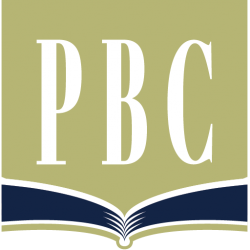 Since our Providence church family is reading through the New Testament beginning in Luke’s gospel and Acts in 2011, I wanted to provide you with some helpful background information. This will make Luke’s gospel more understandable and (I hope) aid your application of this truth.
Since our Providence church family is reading through the New Testament beginning in Luke’s gospel and Acts in 2011, I wanted to provide you with some helpful background information. This will make Luke’s gospel more understandable and (I hope) aid your application of this truth.
To begin with, Luke is the longest Gospel. Luke-Acts contain the largest number of verses by any author in the New Testament. He was a Gentile and a second-generation Christian (someone who did not see or know Jesus during His earthly life).
Luke writes the most grammatically correct and polished koiné Greek of all the New Testament writers, with the possible exception of the author of Hebrews. Greek was apparently his mother tongue. He was also highly educated and a physician (cf. Col. 4:14).
Luke’s Gospel emphasizes Jesus’ love and care for those whom the Jewish leaders never even noticed: women (e.g. Mary, Elizabeth, Anna, Mary and Martha, etc.); the poor (cf. Luke’s Beatitudes, Luke 6:20–23 and teachings on wealth, cf. 12:13–21; 16:9–13, 19–31); the socially, racially, and religiously ostracized:  immoral women (cf. 7:36–50); Samaritans (cf. 9:51–56; 10:29–37; 17:11–16); lepers (cf. 17:11–19); tax collectors (cf. 3:12–13; 15:1–2; 18:9–14; 19:1–10); criminals (cf. 23:35–43); rebellious family members (cf. 15:11–32); the poor (cf. 6:20; 16:19–31); and Gentiles in general (cf. 13:29; 14:23).
Luke records the eye witness memories of Mary and also her genealogy (i.e. 3:23–38). His Gospel is based on interviews and investigative research (cf. 1:1–4).
According to historical accounts, Luke was a native of Antioch of Syria. He was a physician; a single man; a close associate of the apostle Paul; he wrote from Achaia; and died at age 84 in Boeotia (East central Greece, Northwest of Attica).
Luke used terms related to medicine, cures, diseases, etc. at least 300 times. Also, Mark’s negative comments about physicians in Mark 5:26 are omitted in the parallel in Luke 8:43 (perhaps as a “professional courtesyâ€).
Luke’s Gospel is primarily targeted to Gentiles (non-Jewish people):
- It explains Jewish customs.
- The gospel extends to all people (cf. 2:10).
- It quotes prophecies which refer to “all flesh†(cf. 3:5–6 which is a quote from Isaiah 40).
- The genealogy goes back to Adam (i.e. affecting all humans, cf. 3:38).
- It has many examples of God’s love for Gentiles (e.g. Luke extends the boundaries of those welcomed to the Messianic banquet, 13:29).
- It uses Old Testament examples that announce God’s love for Gentiles (cf. 2:32; 4:25–77).
Luke’s Great Commission asserts that forgiveness must be preached to all nations (cf. 24:47).
All of the Gospels were written to target specific groups of people for the purpose of evangelism (cf. John 20:30–31)
1.  Matthew to Jews
2.  Mark to Romans
3.  Luke to Gentiles
4.  John to all peoples
Luke uniquely mentions the mission of the Seventy (cf. 10:1–24). For the rabbis, 70 was the number denoting all the languages of the world (cf. Gen 10). By Jesus sending out 70 preachers of the good news, this would communicate that the gospel is for all people.
Luke 21 is similar to, but slightly different from, Matt. 24 and Mark 13, concerning the imminent return of Christ and the end of the world. However, Luke speaks of the progress of world evangelization, which takes time for the church to accomplish (cf. 24:47).
Also Luke (like Paul) emphasizes that the Kingdom of God is here now in seed form (cf. 10:9, 11; 11:20; 17:21), but is fully realized only at the return of Christ in a future consummation.
Luke quoted the OT more sparingly than Matthew, and when citing OT passages, he nearly always employed the LXX, a Greek translation of the Hebrew Scriptures.
Furthermore, most of Luke’s OT citations are allusions rather than direct quotations, and many of them appear in Jesus’ words rather than Luke’s narration (2:23, 24; 3:4–6; 4:4, 8, 10–12, 18, 19; 7:27; 10:27; 18:20; 19:46; 20:17, 18, 37, 42, 43; 22:37).
Starting with 9:51, Luke devoted 10 chapters of his narrative to a travelogue of Jesus’ final journey to Jerusalem. Much of the material in this section is unique to Luke.
Jesus’ journey to the cross is the heart of Luke’s gospel, and it features a theme Luke stressed throughout: Jesus’ relentless progression toward the cross to bear the sins of His people.
This was the very purpose for which Christ had come to earth (cf. 9:22, 23; 17:25; 18:31–33; 24:25, 26, 46), and His purpose would not be thwarted. The saving of sinners was His whole mission (19:10).
As we read Luke and Acts together in 2011, let’s remember Luke’s perspective and realize that he, like us, never saw Jesus in the flesh. He wrote as a second generation believer. He wants us to understand the facts of Jesus’ life and ministry on earth and to know that JesusChrist  is God, our Savior, and our eternal King.
The gospel of Christ is historical; it is real, it is factual, it is supported by eyewitness testimony as well as external evidence. The gospel is life-changing and powerful to all who believe unto salvation. God’s Word changes our thoughts and therefore it changes our lives.
Looking forward to our journey together,
Pastor Kevin

